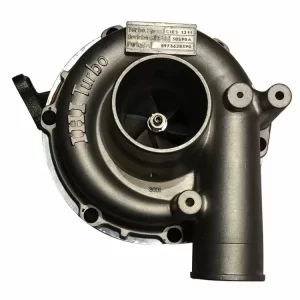Introduction
A turbocharger is a critical component used in automotive and industrial applications to increase the power output and efficiency of internal combustion engines. By compressing the incoming air, a turbocharger enables the engine to burn more fuel and generate greater power. This article aims to provide a comprehensive understanding of how a turbocharger works.
Basic Components of a Turbocharger
A turbocharger consists of several key components, including the turbine housing, compressor housing, turbine wheel, and compressor wheel. The turbine housing is connected to the exhaust manifold, while the compressor housing is linked to the engine’s intake system. The turbine and compressor wheels are located within their respective housings and are connected by a common shaft.
Exhaust Gas Energy Utilization
The turbocharging process begins with the flow of exhaust gases from the engine into the turbine housing. As the hot exhaust gases pass through the turbine housing, they strike the turbine wheel’s blades, causing it to rotate. This rotation is driven by the energy contained within the exhaust gas flow.
Compressed Air Generation
As the turbine wheel rotates, the connected shaft spins the compressor wheel located in the compressor housing. The compressor wheel draws in ambient air and compresses it before delivering it to the engine’s intake system. The compression is achieved by the blades on the compressor wheel, which rapidly spin and force air into a smaller volume.
Boosting Effect
By compressing the intake air, a turbocharger increases its density before it enters the engine’s cylinders. This higher density allows for a larger amount of air to be introduced during each intake stroke. Consequently, the engine can inject more fuel, resulting in a more powerful combustion process and enhanced power output.
Wastegate and Boost Control
To prevent over-boosting, turbochargers incorporate a wastegate mechanism. The wastegate controls the amount of exhaust gas flowing through the turbine housing, thus regulating the speed of the turbine wheel. When the desired boost pressure is reached, the wastegate diverts a portion of the exhaust gas away from the turbine, reducing its rotational speed and preventing excessive boost levels.
Intercooling
In many turbocharged systems, an intercooler is utilized to cool down the compressed air before it enters the engine. The intercooler reduces the intake air temperature, improving its density and thereby increasing power output. Cooler air also helps prevent detonation or knocking, which can damage the engine.
Benefits and Considerations
Turbocharging offers several advantages, including increased power output, improved fuel efficiency, and reduced emissions. However, it is crucial to consider potential drawbacks, such as increased complexity, higher cost, and the need for regular maintenance to ensure optimal performance and durability.
Conclusion
A turbocharger plays a vital role in improving the performance and efficiency of internal combustion engines. By utilizing the energy from exhaust gases, compressing intake air, and creating greater power output, turbochargers have become an integral component across various applications. Understanding the operation of a turbocharger and its components enables engineers and enthusiasts to harness its benefits effectively and optimize the performance of their engines.



